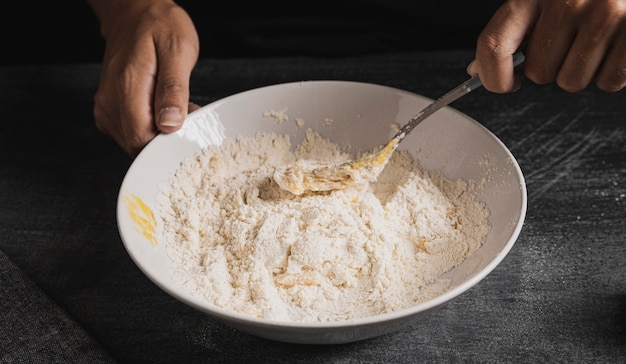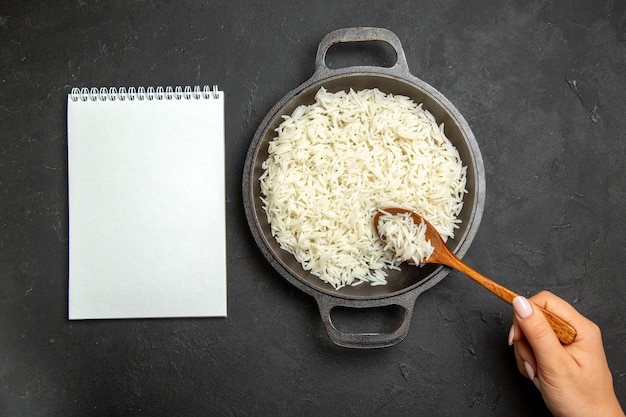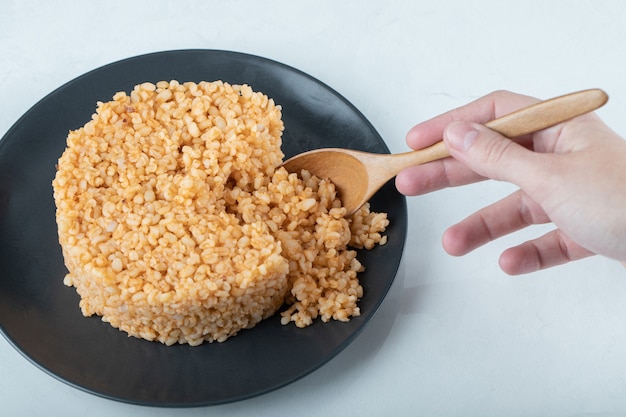(Part 1) Understanding Short Grain Brown Rice

The Skinny on Short Grain Brown Rice
Short grain brown rice, well, it's brown rice with short, plump grains. This little guy is a staple in Japanese cuisine, especially for making sushi and other rice dishes. It has a slightly sticky texture, which is key for holding those sushi rolls together, you know? And it has a subtle nutty flavour that adds a touch of depth to your dishes.Why Choose Short Grain Brown Rice?
Apart from being delicious and versatile, short grain brown rice is a nutritional powerhouse! It's packed with fibre, vitamins, and minerals, making it a healthy addition to any diet. Plus, it's a good source of complex carbohydrates, which provide sustained energy, keeping you feeling full and satisfied for longer.(Part 2) Choosing the Right Rice

Finding the perfect rice
You'll find short grain brown rice at most supermarkets and Asian grocery stores. Keep an eye out for the bulk sections too, because you might be able to snag a deal. Just remember to check the expiration date before you buy it. Nobody wants stale rice!What to Look For
Here's the thing, you want to make sure you're getting the best possible rice. When you're picking out your rice, check for:- Colour: Look for a rice with a rich, brown colour. Avoid any that look pale or discoloured. A dull colour might mean it's old or wasn't stored properly.
- Smell: Give the rice a sniff! Fresh rice should smell slightly nutty and earthy. If it smells musty or stale, it's probably best to leave it on the shelf.
- Texture: The grains should be firm and plump. Avoid rice that feels dry or crumbly.
(Part 3) Preparing the Rice

Rinsing Your Way to Perfect Rice
Now, here's the thing about rinsing rice. It might seem like a chore, but it's crucial for achieving perfect rice. Rinsing gets rid of excess starch and impurities, which can make your rice cloudy and sticky. Put the rice in a fine-mesh strainer and rinse it under cold running water until the water runs clear. It's a simple but effective step that makes a world of difference!Soaking for Extra Fluffiness (Optional)
Soaking the rice before cooking isn't strictly necessary, but it's a little trick I've picked up over the years. It can improve the texture and flavour of your rice, making it extra fluffy and delicious. Just soak the rice in cold water for 30 minutes to an hour. This gives the rice a chance to absorb moisture, which helps it cook more evenly. It might even make it a bit more tender, too!(Part 4) Cooking the Rice
The Traditional Stovetop Method
The stovetop method is the classic way to cook rice, and it's super simple! Here's what you need to do:- Combine Rice and Water: In a medium saucepan, combine the rinsed rice with 1.5 cups of water for every cup of rice. You want to make sure there's enough water for the rice to absorb and cook evenly.
- Bring to a Boil: Bring the mixture to a boil over medium-high heat. Once it's bubbling, cover the pot and reduce the heat to low.
- Simmer: Simmer for about 30-40 minutes, or until the water is absorbed and the rice is cooked through. The trick here is to avoid lifting the lid while the rice is cooking. This lets out steam and can make your rice dry.
- Rest: Once the rice is cooked, let it rest, covered, for about 10 minutes. This allows the rice to steam and become even more fluffy.
The Modern rice cooker Method
If you're feeling lazy or just want to avoid constantly checking the stove, a rice cooker is a lifesaver. It takes the guesswork out of cooking rice. And honestly, it's incredibly easy!Here's what you do:- Rinse the Rice: Rinse your rice as you would for the stovetop method.
- Add Rice and Water: Add the rinsed rice and the appropriate amount of water to your rice cooker. Check the instructions on your rice cooker for the recommended water-to-rice ratio. They're usually pretty good at telling you what to do!
- Press "Cook": Press the "Cook" button on your rice cooker, and it does all the work for you! Just sit back and relax.
- Let it Rest: Once the rice cooker beeps, it's ready! Let it rest for a few minutes to allow the steam to redistribute.
(Part 5) Mastering the Texture
The Secret to fluffy rice
Everyone wants fluffy rice, right? It's the key to a truly satisfying rice dish. The trick lies in the ratio of rice to water and the cooking time. For fluffier rice, use a slightly higher water-to-rice ratio, say 1.75 cups of water for every cup of rice. And remember to let it rest after cooking. This will help to redistribute the steam and make it even lighter and fluffier.Avoiding Mushy Rice
Mushy rice? No thank you! The key here is to not overcook the rice. It should be cooked through, but not mushy. Make sure you're using the right water-to-rice ratio. Too much water can lead to mushy rice. If you're unsure, start with a slightly lower water-to-rice ratio and add more water if needed during the cooking process.Preventing Dry Rice
Dry rice is just sad. To avoid this, make sure you're using the right water-to-rice ratio. And don't lift the lid while the rice is cooking! It lets out steam and can dry out your rice.(Part 6) Adding Flavor
Simple Seasoning
A pinch of salt and pepper is a classic for a reason. It enhances the natural flavour of the rice and balances out any sweetness.Spicing Things Up
Don't be afraid to get creative with spices! Short grain brown rice is a blank canvas for your culinary creativity. Try adding a pinch of cumin, coriander, or turmeric for a warm and earthy flavour. A sprinkle of dried herbs like thyme or rosemary can also add a lovely aroma.Adding Vegetables and Protein
Want to take your rice to the next level? Stir in some chopped vegetables like onions, carrots, or peas for added flavour and nutrition. You can even add some protein like cooked chicken, tofu, or fish. Remember, adding vegetables or protein will increase the cooking time, so adjust accordingly.(Part 7) Serving and Storing
Serving Suggestions
Okay, so your rice is cooked, seasoned, and ready to go. But what do you serve it with? Short grain brown rice is incredibly versatile, so the possibilities are endless!Here are a few ideas to get you started:- Curries: It's a classic pairing! Short grain brown rice is perfect for soaking up the flavours of a rich, aromatic curry.
- Stir-fries: The sticky texture of short grain brown rice is perfect for stir-fries. Just add it to your favourite stir-fry recipe towards the end of cooking.
- Salads: It can add a hearty and filling base to your salads.
- Sushi: Of course! It's the traditional base for sushi. Try making your own sushi rolls at home.
Storing leftover rice
We've all been there - leftover rice. It happens! Let it cool completely and then store it in an airtight container in the fridge for up to three days. You can reheat it in the microwave or on the stovetop. And if you're feeling creative, use leftover rice to make rice pudding, fried rice, or even rice balls.(Part 8) FAQs
Q: How long does it take to cook short grain brown rice?
A: The cooking time for short grain brown rice can vary depending on the method you use. On the stovetop, it typically takes about 30-40 minutes. In a rice cooker, it usually takes about 20-25 minutes.
Q: What is the best water-to-rice ratio for short grain brown rice?
A: The general rule of thumb is to use 1.5 cups of water for every cup of rice. You can adjust the ratio based on your preference for fluffiness or stickiness. For a fluffier rice, use slightly more water. For a stickier rice, use slightly less water.
Q: Can I use long grain brown rice instead of short grain?
A: You can, but the results might be different. Long grain brown rice is known for its fluffy texture, while short grain brown rice is more sticky. If you use long grain brown rice, it won't have the same sticky texture that's ideal for sushi or other Japanese dishes.
Q: What are some good substitutions for short grain brown rice?
A: If you can't find short grain brown rice, you can try using other types of rice, such as medium grain brown rice or even white rice. However, keep in mind that the cooking times and textures may differ.
Q: What are the nutritional benefits of short grain brown rice?
A: Short grain brown rice is packed with nutrients. It's a good source of fibre, which is essential for digestive health. It also contains vitamins, minerals, and antioxidants. It's also a great source of complex carbohydrates, which provide sustained energy.
(Part 9) Conclusion
Well, there you have it! Your comprehensive guide to cooking perfect short grain brown rice. It's all about choosing the right rice, rinsing it properly, using the correct water-to-rice ratio, and letting it rest after cooking. And remember, don't be afraid to experiment with flavours and seasonings! Now go forth and conquer the world of brown rice!(Part 10) Recipe: Simple Short Grain Brown Rice
Ingredients:
- 1 cup short grain brown rice
- 1.5 cups water
- 1/2 teaspoon salt
- Pinch of black pepper (optional)
Instructions:
- Rinse the rice in a fine-mesh strainer until the water runs clear.
- In a medium saucepan, combine the rinsed rice, water, salt, and pepper (if using).
- Bring the mixture to a boil over medium-high heat. Once it starts boiling, cover the pot and reduce the heat to low.
- Simmer for about 30-40 minutes, or until the water is absorbed and the rice is cooked through.
- Let the rice rest, covered, for about 10 minutes.
- Fluff the rice with a fork before serving.
Enjoy!
(Part 11) Beyond the Basics: Exploring the World of Short Grain Brown Rice
Variations and Substitutions
While short grain brown rice is often associated with Japanese cuisine, you can find it in dishes from other cultures as well. Here are some interesting variations and substitutions:
- Brown rice pilaf: This classic dish often features short grain brown rice cooked with aromatics like onions, garlic, and herbs. It can be served as a side dish or incorporated into main courses like chicken or lamb.
- Brown Rice Risotto: A comforting and satisfying dish that utilizes the sticky texture of short grain brown rice to create a creamy and flavourful base. It can be flavored with mushrooms, seafood, or vegetables.
- Brown Rice Porridge: A hearty and nourishing breakfast option, especially in cooler weather. You can cook it with water or milk, and add sweetness or savory ingredients like nuts, seeds, or fruits.
- black rice: Often used in Chinese cuisine, black rice is a variety of short grain rice that offers a rich, nutty flavour and a beautiful dark purple colour. It's often cooked with sweet ingredients like sugar or honey.
Whether you're a seasoned cook or just starting out, I encourage you to explore the diverse world of short grain brown rice. It's a delicious and versatile ingredient that can add a touch of culinary sophistication to your dishes.
Everyone is watching

How to Cook Frozen Lobster Tails Perfectly: A Step-by-Step Guide
RecipesLobster. Just the word conjures up images of lavish meals, special occasions, and a taste of luxury. But let's...

Pigs in a Blanket Cooking Time: How Long to Bake for Perfect Results
RecipesAh, pigs in a blanket. Just the name conjures up images of those delightful little parcels of crispy pastry en...

Pork Fillet Cooking Time: How Long to Cook It Perfectly
RecipesPork fillet, or tenderloin as it's sometimes called, is a real favourite in our house. It's so versatile, and...

The Ultimate Guide to Cooking Delicious Frankfurters
RecipesLet's face it, we all love a good frankfurter. It's a classic, simple, and always satisfying. But let's be rea...

Wolf Meat Recipes: A Guide to Cooking Wild Game
RecipesLet's be honest, you don't see wolf meat at your local butcher shop every day. It's a bit of a wild card, but ...
